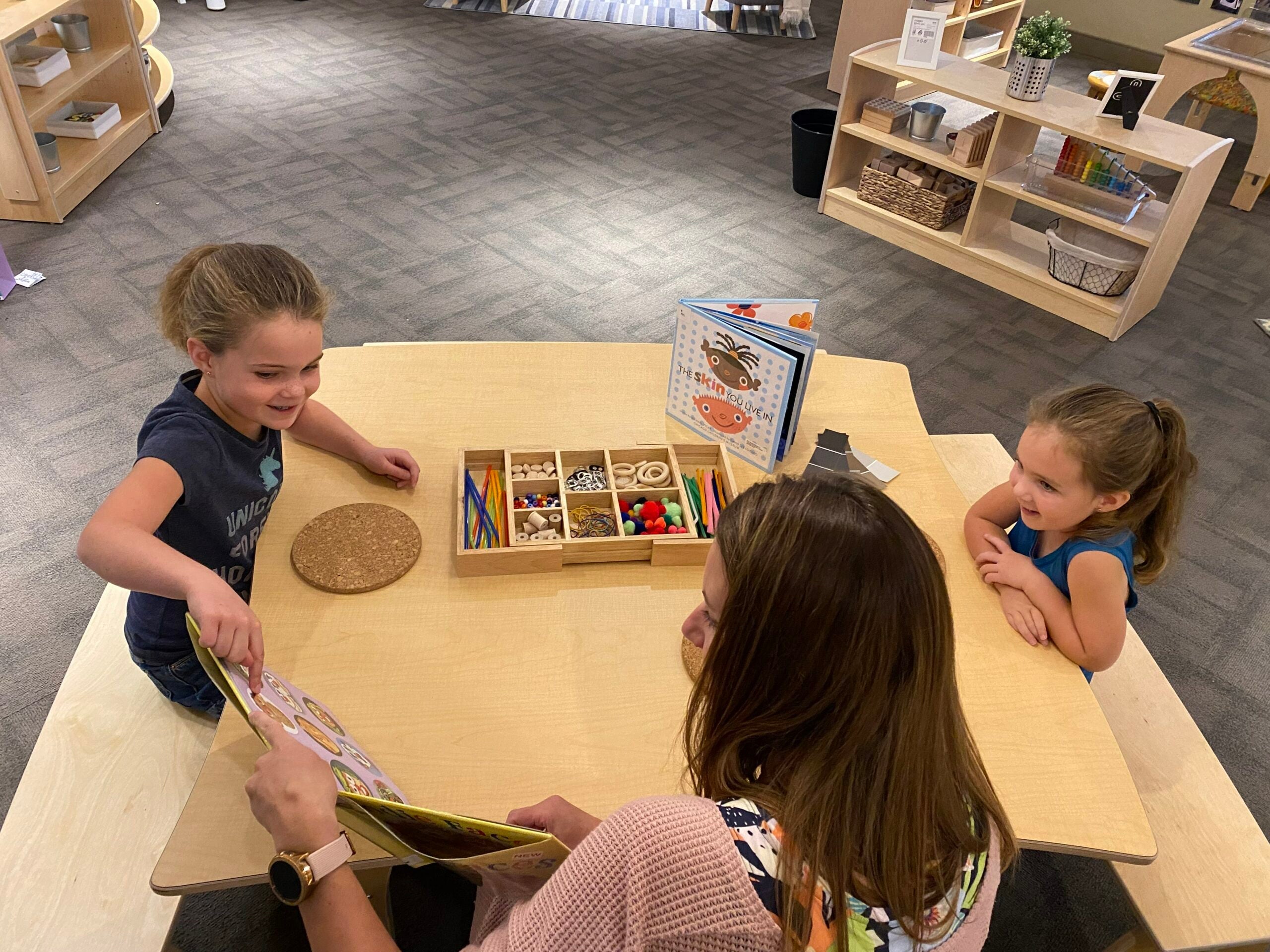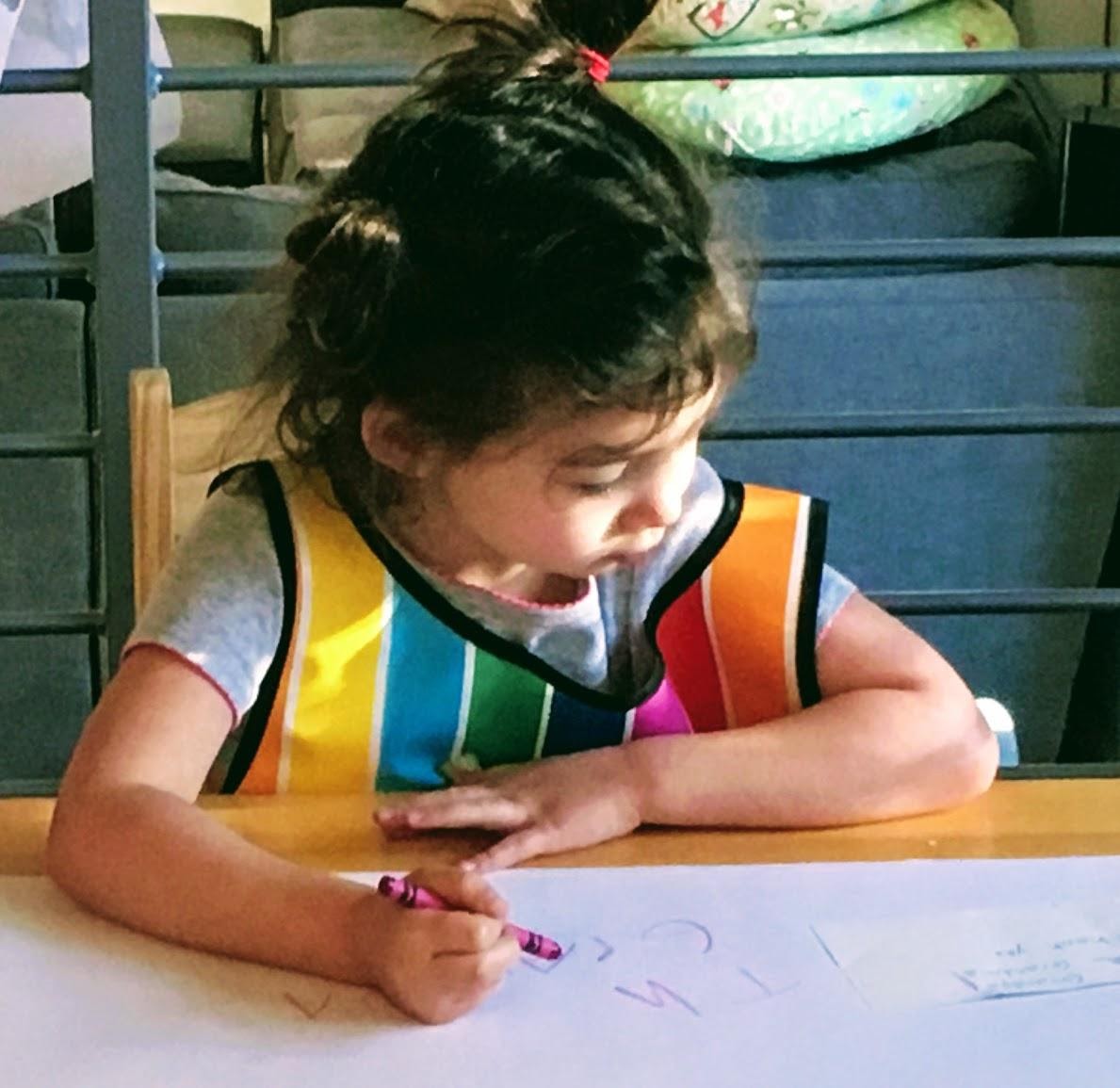Creating a Welcoming Early Childhood Environment
Welcoming families, whether new or returning to a childcare or school environment, is an important first step any year. However, as we embark on this year following uncertainty with the global pandemic, making a safe, welcoming, and trusting environment for children and their families is more important than ever before. While some children continued to attend childcare throughout the pandemic, others have lived most of their life within the confines of their own home with their own families, not being exposed to others. Entering an early childhood environment may seem overwhelming for them and their parents, however we as educators can help ease this transition without compromising the quality of education and experiences.
Creating Familiar Spaces
When setting up a space I always encourage educators to take a step back and get to a child’s level. The space you are creating is big to these little people. Seeing it from an adult level is vastly different from a child’s perspective. Get on your knees and take a true look around your room while asking the following questions:
Does it seem welcoming?
Can I tell what I am supposed to do in each area of the room?
Is there a safe space for me to go?
Do I feel like I belong here?
If your answer to any of these is no, or if any cause you to hesitate, I encourage you to rework the area. When children feel safe, like they belong, and that they have purpose in the space, their ability to learn and engage increases vastly while negative behaviors dramatically decrease. The initial work to change the space will repay itself tenfold in the long run. One way to create an environment that feels safe and secure to children, is to make it feel like home. Home offers a sense of comfort and familiarity to children and offering this little piece of security to children gives them a place to settle into the new space. Bold colors with an overwhelming amount of choices, materials, and stimulation put a child’s sensory input into overdrive before they even begin to learn. Keeping the environment neutral and being intentional with room design and materials is an important first step in a successful program. While the spaces highlighted below are not exhaustive, they are some key areas to focus and begin with in transforming your space.
Dramatic Play
The area when setting up a classroom I always start with is the Dramatic Play center. This is the hub of a classroom space and offers a familiar space to children. When you think of a home, where do most people gather? The answer is usually the kitchen. Take this thought as guidance when setting up your classroom. Rather than putting the center in a corner, I encourage you to place it in the middle of your room, if your room allows. This placement allows the kitchen in dramatic play to be the hub of your classroom and usually allows for more children to access the area. Ensure that there are familiar items such as plates, cups, bowls, utensils, pots, and food, but limit the number of items so that it does not become overwhelming. Limiting the quantity also encourages sharing, language development between peers, and reduces the famous dump and run phenomenon that always occurs at the start of the year. Other items you may want to consider in this space are items such as baby dolls with clothes, a table to sit and eat, and a clipboard with a pencil to take orders or make a shopping list.
Reading Corner
Once the Dramatic Play area is set up, it becomes easier to begin to think through the other areas of your room. Naturally, the Dramatic Play space is going to have a constant hum of noise and hustle and bustle to it, this is important to consider when thinking through what should be set up surrounding it. Setting up a Reading Corner off to the side of Dramatic Play, preferably by natural light, allows for the flow of the home environment to continue, as this area acts like the living room for the home. Placing these two centers within close proximity allows for children to flow from one space to the next allowing for more creativity, collaboration, and inspiration. When setting up your Reading Corner it is important to consider comfortable seating, and home like touches such as lamps, pillows, or throws, if health regulations allow. These are all touches that add to the home type feeling of the space. While books are fantastic, limit their number so that they are displayed neatly and are easy to access. Too many books make this space cluttered, and the choices seem overwhelming and almost daunting to children. In addition, consider having a shelf in this area that has loose parts, puzzles, or small manipulatives that encourage quiet play and engagement. Not all children know how to read or enjoy reading, so providing these types of materials in this space welcomes all children and gives them a purpose for being in the space. These small manipulatives and loose parts also allow children to re-enact scenes from a story providing you and your colleagues a means to get a better sense of their level of understanding.
Whole Group
One important area in a room that takes up considerable space is the Whole Group area. While this is not used as a space where whole group teaching occurs for long periods of time in younger classrooms, it is an important area as it allows for gathering as a community. Consider placing your Whole Group area in a corner or where shelving can help to partition the area off. This allows the space to have a begin and end point so that the big space does not seem as vast to children. This area should have a carpet or softer flooring to allow for blocks, ramps, and other building materials to be located and engaged with. The carpeting or soft flooring allows for crashing blocks to fall without quite as much noise and disruption. This softer flooring or carpeting also increases the comfort for children. I always encourage adults to sit on the floor with the children as when their bum begins to go numb or they are uncomfortable, it means the children are uncomfortable too. They have been held too long at carpet time, and it’s time to get them moving again. Adding in a few pictures of buildings as a provocation, measuring tapes, or clipboards in this area add to the educational value of this area. In addition, consider how loose parts such as wooden balls, wooden rings, gems, or items such as cork or cardboard can add to the creations. These items are all easy to introduce to the area and take a child’s building with blocks to the next level.
Hide Away
As much fun as an early childhood classroom can be, children need safe spaces to retreat to. Providing a cozy cube, tent, or space that is designed to be quiet and comforting is important. This acts much like a child’s bedroom at home. They know that it is there, it is safe, and they can retreat to it when they need to. This space should be located away from noisy areas so that it allows for an opportunity of escape. Placing this in a space that is next to a table, an easel, or in a corner, usually provides some protection for this area. While it is a space to retreat to, providing quiet items such as loose fabric pieces, small wooden log pieces, or other open-ended loose parts allow for the child to tinker in various ways while they are in this quiet space and encourage the re-entry into play when they are ready. Offering these types of materials also makes it a welcoming space rather than a cold and isolated space that feels more like a space of punishment.
Overall Special Touches
Small touches in a classroom are just as important as the bigger details. These small details are what takes a classroom from a sterile environment to a welcoming one. Start with lighting in your room. Consider how much natural light you have. Florescent lighting is harsh and overwhelming for most adults, let alone children. If you have the option to use natural light, lamps, or dimmable lighting, consider turning off the fluorescent lights. This lighting change can take a room that is operating in a heightened state, immediately into a state that is calmer and ready to engage and learn. If you do not have any option other than fluorescent lighting, try turning off half or sections of the lighting. Adding inexpensive picture frames to your classroom with pictures of the child and their family gives an instant sense that they belong. Try and ask parents to send you a picture of their child or family before the first day of school and have this in a frame within the classroom. There are no words to express the joy on the child’s face when they discover their family in the room. They instantly feel they belong in this space and that this space is theirs. Greenery is another addition, whether artificial or real, that adds to the visual appeal of the room. While you want to be careful not to overwhelm the room so that it becomes a jungle, a few small plants intentionally placed can make a big impact.
Conclusion
Overall, setting up a classroom space is one of the key pieces to starting your program off on the right foot. It is one that takes time but is worth it. I encourage you to be intentional with all the things that you place in your room, little or big. If it does not serve a purpose, do not have it in your room. If you keep the child’s perspective in mind while creating your space and build the space from their viewpoint, you will be left with a child-friendly space that is welcoming, warm, and inviting.
Welcoming families, whether new or returning to a childcare or school environment, is an important first step any year. However, as we embark on this year following uncertainty with the global pandemic, making a safe, welcoming, and trusting environment for...







Share:
Flexible Intention Part III of III
Constructing with Color- What You Need to Know About the Light Laboratory